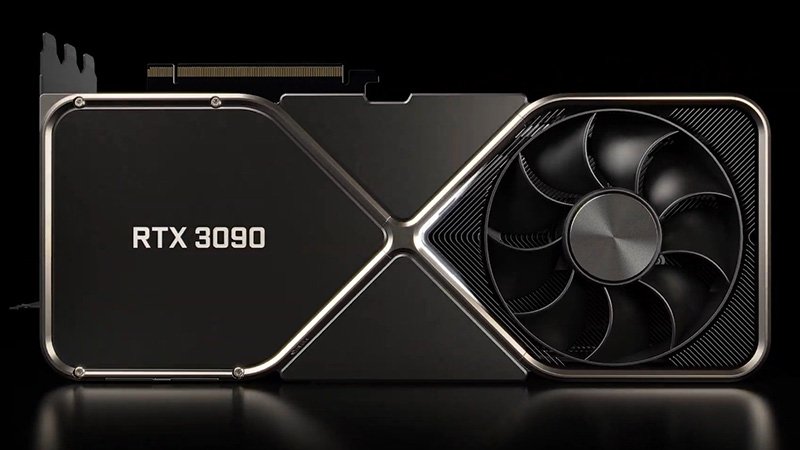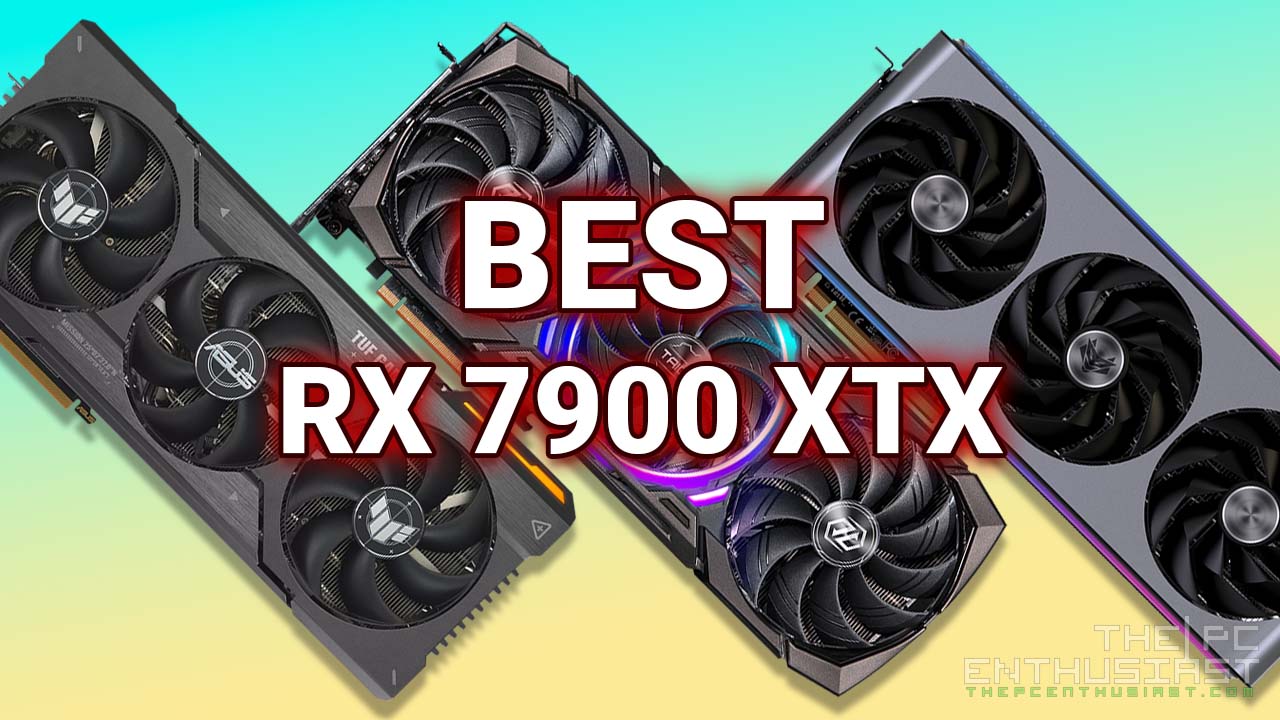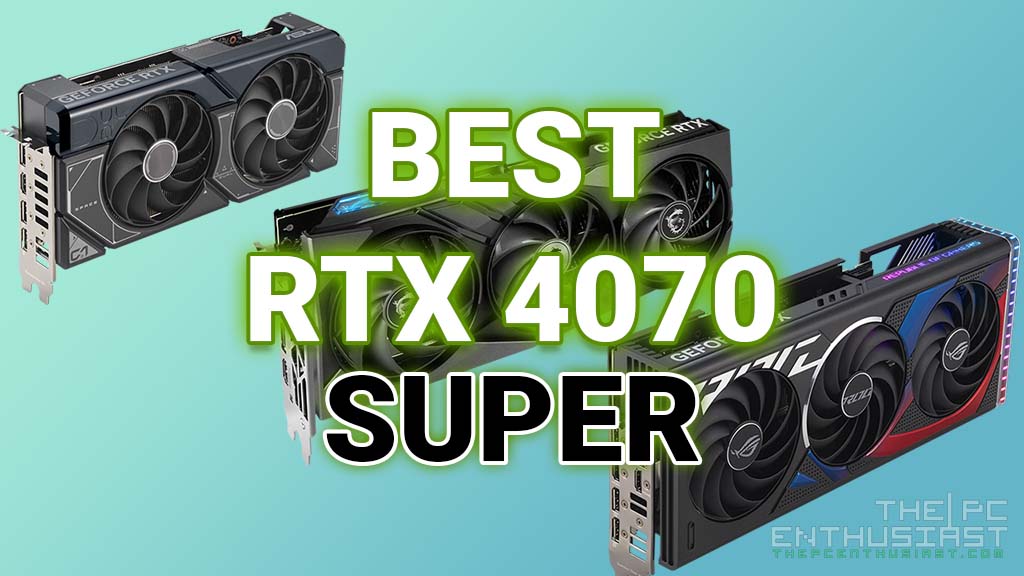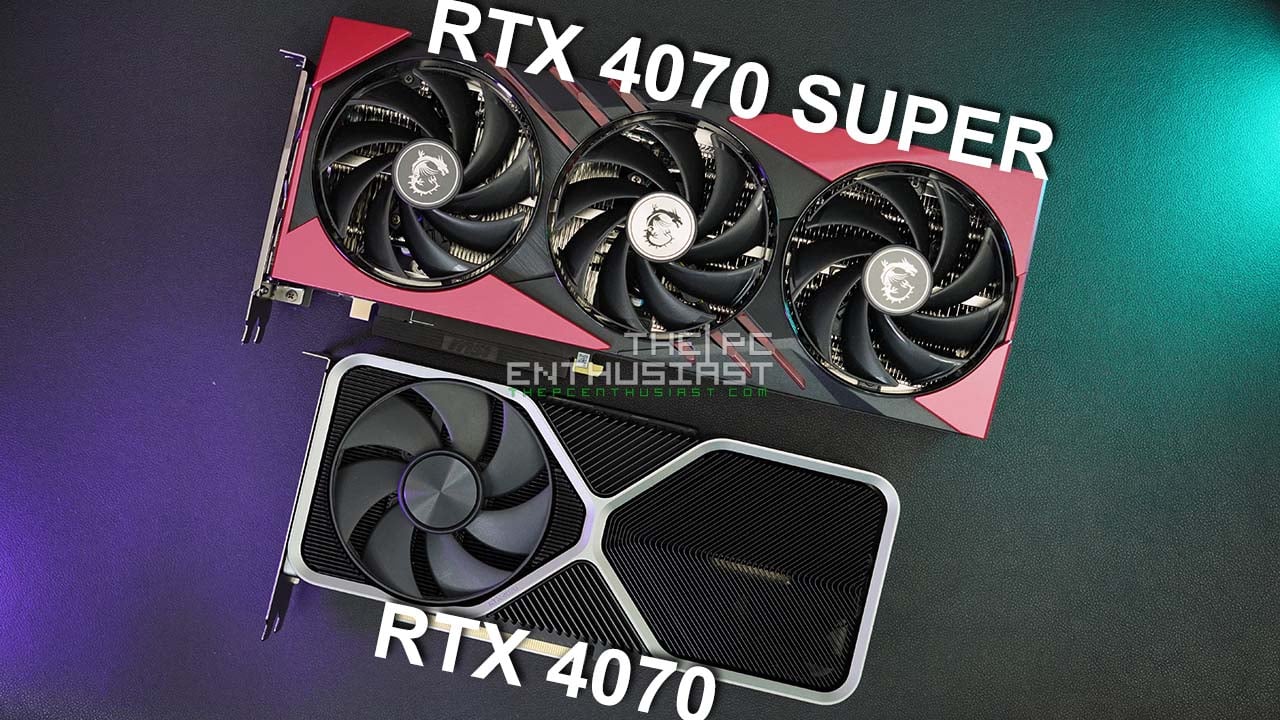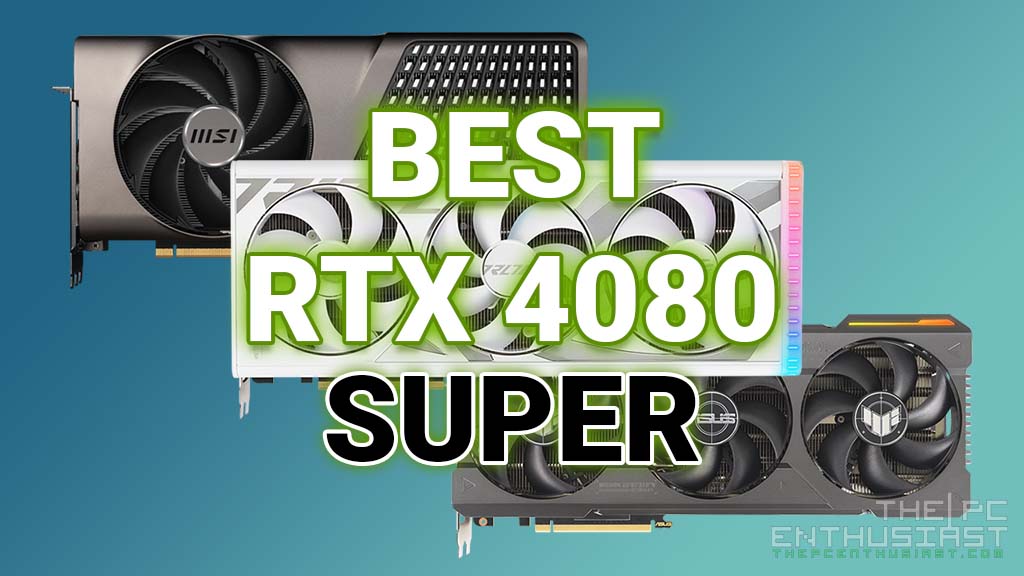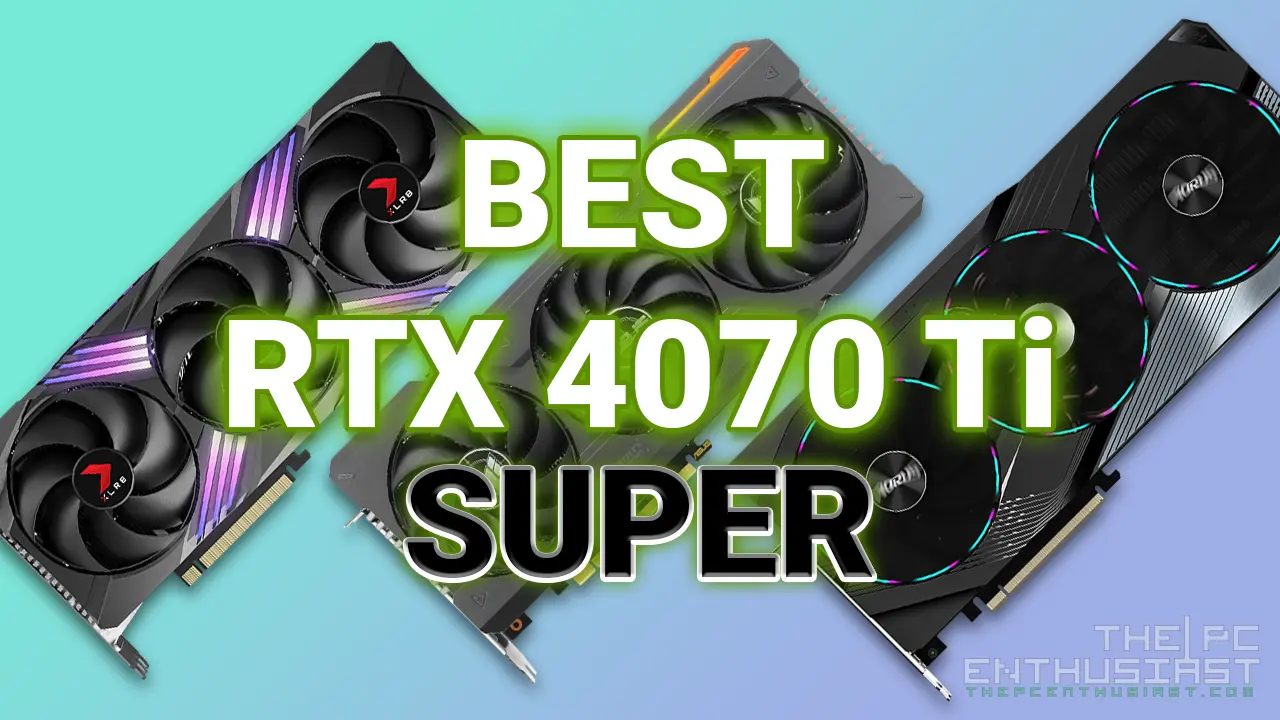NVIDIA recently announced its latest GeForce RTX 30 series graphics cards, based on the new Ampere architecture and 8nm process from Samsung. NVIDIA’s CEO Jensen Huang’s presentation didn’t end with the announcement of the RTX 3080 and RTX 3070. But he also unveiled the GeForce RTX 3090, a “BFGPU” offering a “TITAN class” level of performance. What is a “BFGPU” graphics card? Well, let’s learn more about the RTX 3090 below.
UPDATE: GeForce RTX 3080 Graphics Cards available on Newegg.com here, B&H Photo here
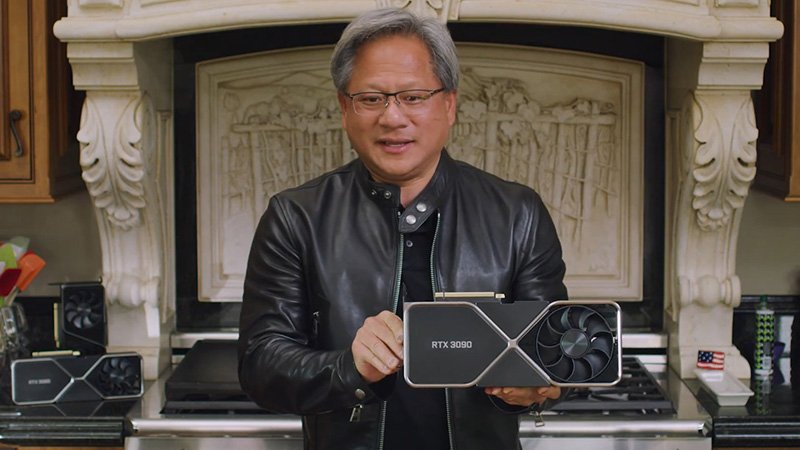
NVIDIA GeForce RTX 3090 BFGPU Graphics Card
So, what does “BFGPU” stands for? During Jensen Huang’s presentation, he called the RTX 3090 as a “Big Ferocious GPU”. And that’s basically what it means, BFGPU = Big Ferocious GPU. I think it’s more of a marketing term rather than a proper name for a product.
But it’s not named BFGPU simply because it’s a big chunky graphics card that occupies 3 PCI slots, no. The RTX 3090 is a TITAN-class graphics card powered by the Ampere architecture. And it’s the successor of the previous gen’s TITAN RTX.
With the new Ampere architecture, the RTX 3090 features NVIDIA’s 2nd generation RTX architecture, offering twice the ray tracing and AI performance. It also features a whopping 24GB of GDDR6X, capable of reaching up to 19.5 Gbps of memory speed.
Allow me to answer some questions that I think will become FAQ in the long run. It’s easier to digest and get the gist of the new RTX 3090 graphics card.
How many CUDA cores does the RTX 3090 BFGPU have and what’s the memory size?
How fast is the GeForce RTX 3090 graphics card?
Is the GeForce RTX 3090 faster than TITAN RTX?
How much power does the RTX 3090 consume? Is it power-hungry?
What is the recommended PSU for the RTX 3090?
Is the GeForce RTX 3090 SLI-capable? Does it have an NVLink connector?
How much is the GeForce RTX 3090 BFPU?
When will the RTX 3090 become available?
Will the RTX 3090 fit inside my casing/chassis?
Should I get the RTX 3090 for 4K UHD gaming?
In addition to the answers above, the GeForce RTX 3090 also features a dual-axial flow-through design that is “10x quieter than the TITAN RTX and keeps the GPU up to 30 degrees Celcius cooler” according to NVIDIA.
When it comes to connectivity options, the RTX 3090 BFGPU Founders Edition has three DisplayPort 1.4a and an HDMI 2.1. NVIDIA removed the USB-Type C for VR headsets, but it does have an NVLink connector for SLI.
Also, if you are wondering why the 12-pin PCIe power connector is located on the middle-side area of the graphics card, that’s because the PCB of these RTX 30 series cards is smaller or shorter.
Speaking of 12-pin, don’t worry if your PSU doesn’t have a 12-pin PCIe connector. I think the 12-pin is only used by NVIDIA on their Founders Edition cards; and an 8-pin to 12-pin adapter is included. Custom RTX 30 series cards from AIB partners are still using the 8-pin PCIe power connector.
Aside from the new design and architecture, these new RTX 30 series cards also offer several new features, which I outlined below.

NVIDIA RTX 30 Series Features
Below are the “cutting-edge” technologies that the new RTX 30 Series GPUs and NVIDIA Ampere architecture have to offer:
- New streaming multiprocessors: The building block for the world’s fastest, most efficient GPU, delivering 2x the FP32 throughput of the previous generation, and 30 Shader-TFLOPS of processing power.
- Second-gen RT Cores: New dedicated RT Cores deliver 2x the throughput of the previous generation, plus concurrent ray tracing and shading and compute, with 58 RT-TFLOPS of processing power.
- Third-gen Tensor Cores: New dedicated Tensor Cores, with up to 2x the throughput of the previous generation, making it faster and more efficient to run AI-powered technologies, like NVIDIA DLSS, and 238 Tensor-TFLOPS of processing power.
- NVIDIA RTX IO: Enables rapid GPU-based loading and game asset decompression, accelerating input/output performance by up to 100x compared with hard drives and traditional storage APIs. In conjunction with Microsoft’s new DirectStorage for Windows API,(1) RTX IO offloads dozens of CPU cores’ worth of work to the RTX GPU, improving frame rates and enabling near-instantaneous game loading.
- NVIDIA Broadcast for AI-powered Video and Voice: Turn any room into a home studio with AI-taking your livestreams and video chats to the next level with AI-powered audio and video effects like noise removal, virtual background, and webcam auto frame.
- World’s fastest graphics memory: NVIDIA has worked with Micron to create the world’s fastest discrete graphics memory for the RTX 30 Series, GDDR6X.(2) It provides data speeds of close to 1TB/s system memory bandwidth for graphics card applications, maximizing game and app performance.
- Next-gen process technology: New 8N NVIDIA custom process from Samsung, which allows for higher transistor density and more efficiency.
NVIDIA GeForce RTX 3090 Specifications
| RTX 3090 | RTX 3080 | RTX 3070 | RTX 2080 Ti | RTX 2080 | |
|---|---|---|---|---|---|
| Fab Process | 8nm Samsung | 8nm Samsung | 8nm Samsung | 12nm TSMC | 12nm TSMC |
| Architecture | Ampere | Ampere | Ampere | Turing | Turing |
| CUDA Cores | 10496 | 8704 | 5888 | 4352 | 2944 |
| Base Clock | 1400 MHz | 1440 MHz | 1500 MHz | 1350 MHz | 1515 MHz |
| Boost Clock | 1700 MHz | 1710 MHz | 1730 MHz | 1545 MHZ 1635 MHz (FE) | 1710 MHz 1800 MHz (FE) |
| Memory Size | 24GB | 10GB | 8GB | 11GB | 8GB |
| Memory Type | GDDR6X | GDDR6X | GDDR6 | GDDR6 | GDDR6 |
| Memory Clock | 19.5 Gbps | 19 Gbps | 16 Gbps | 14 Gbps | 14 Gbps |
| Memory Bandwidth | 936.2 GB/s | 760.3 GB/s | 448.0 GB/s | 616 GB/s | 448 GB/s |
| Memory Interface | 384-bit | 320-bit | 256-bit | 352-bit | 256-bit |
| Max. GPU Temp. | 93° | 93° | 93° | 89° | 88° |
| Power Connectors | 2x 8-pin | 2x 8-pin | 8-pin | 8+8 pin | 6+8 pin |
| Graphics Card Power | 350W | 320W | 220W | 260W (FE) | 225W (FE) |
| Recommended PSU | 750W | 750W | 650W | 650W | 650W |
| Price | $1,499 | $699 | $499 | $999 (reference) $1,199 (FE) | $799 (reference) $699 (FE) |
Will you be upgrading this year? Are you planning to get an RTX 3090? Or would you rather get the RTX 3080 or RTX 3070 instead?


